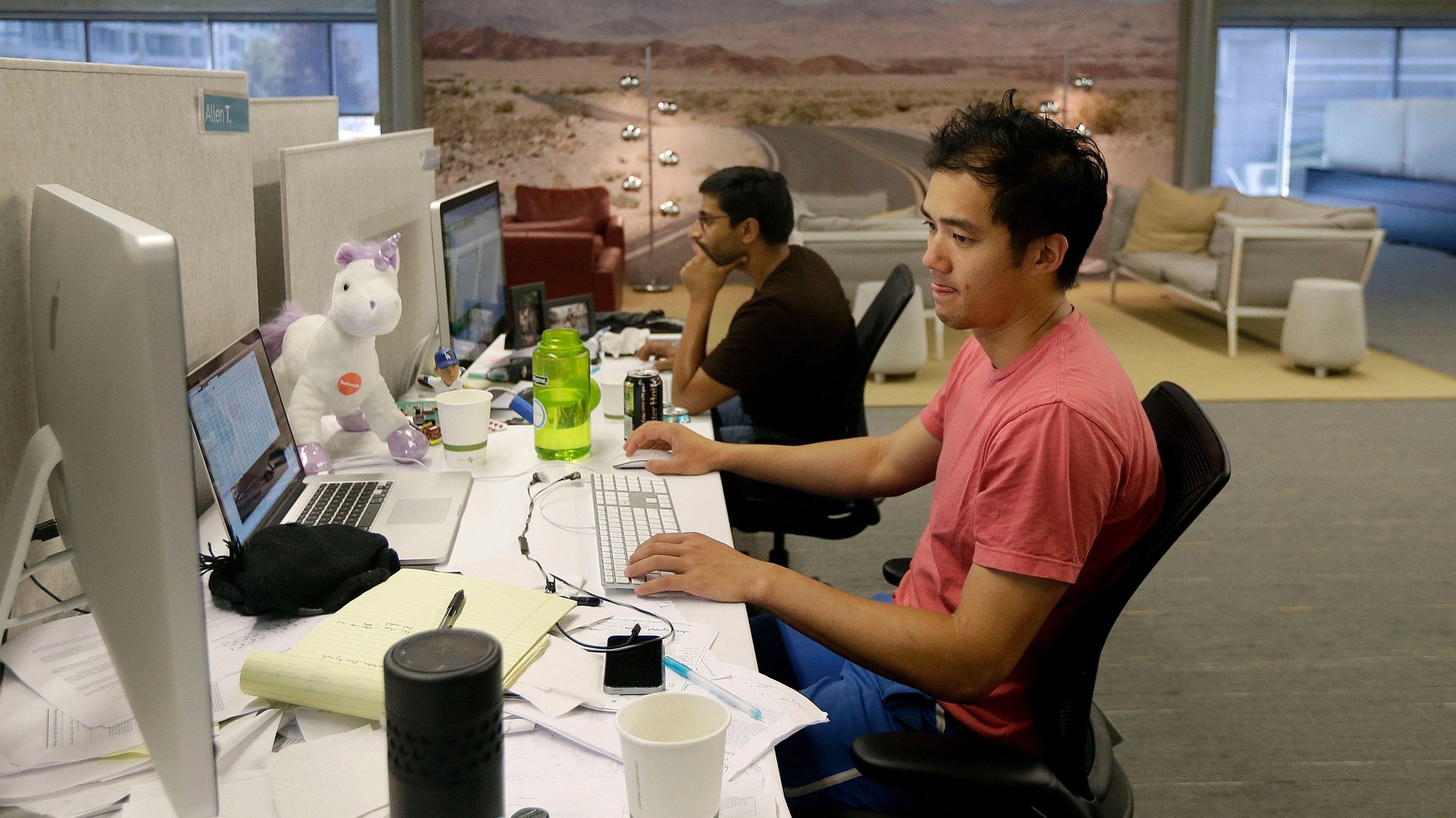One winner of the work-from-home revolution: the cottage seat-filler industry
In the spring of 2010, Vice had a meeting with Intel that could have been make-or-break for the company.


In the spring of 2010, Vice had a meeting with Intel that could have been make-or-break for the company.
Though popular at the time, Vice was barely sustaining itself as a business. Intel, one of the 10 most valuable companies in the world, had access to a $2 billion annual marketing budget. So, like the machiavellian founder he was, Vice CEO Shane Smith decided the company needed to craft an image to look like the company Intel would want it to be.
He walked down the hall to an architecture firm in Vice’s Williamsburg building and negotiated to temporarily borrow its space. By the time of the Intel meeting, the fancy office appeared to belong to Vice. The rebel media company went as far as to install a glass-enclosed conference room and a high-end Japanese toilet in the short-term digs, according to New York magazine, which published an excellent expose on Vice back in June. “Shane’s whole thing was, ‘We can’t let them think we’re these poor kids,’” one former employee told the magazine.
However, there was still one problem. Vice didn’t have enough New York-based employees to pack the room. The morning of the meeting, Vice encouraged its staffers to bring their hip, 20-something friends to the office to fill out the space. It was the workplace equivalent of seat fillers at the Oscars.
What is the value of an office?
In the age of flexible and remote work, headcount at the office is in flux. And sometimes, companies want their offices to appear as if they are busier. An editor here at Quartz says that when she worked as a freelancer, she was on the shortlist of a small advertising agency that would ask her to work from its office when clients came in for meetings.
Other times, companies want to appear leaner. Another Quartz staffer reports having worked at a startup that asked certain employees to stay home on particular days in the off-chance that investors dropped by, to appear as if it were leaner.
Some companies, like the software developer platform Github, pay for prime real estate in the center of cities but let their offices sit half-empty due to generous work-from-home policies. (Others, like Wordpress parent Automattic, are sacrificing office space and giving into the remote-work trend.)
And now, a host of startups including Desk Camping and LiquidSpace have emerged to help match freelancers with empty office space.
The question underpinning this movement is what is the value of an office? If it’s a mere place to do work, traditional offices may soon be usurped by coworking spaces like WeWork. Or perhaps teams might forgo office space altogether in favor of so-called distributed teams, where everyone works remotely. Then, if employees needed to host meetings with clients or investors, they could use services like Peerspace or Breather to book a temporary venue or conference room.
The need for seat fillers seems to be a testament to the wasted value of large, swanky offices. But what if offices were not just a means to work, but of value in and of themselves? Offices can be a reflection of a company’s culture and values. They can promote or suppress communication. Their design can be used as a recruitment tool.
Every company has to make its own choice about why and how it uses an office, or doesn’t use one as the case may be. But one thing seems clear: When companies are paying good money for real estate, the office better be more than an empty room that executives must cajole non-employees to fill.